
| Commissions |
| Artists' Studios |
| Guest Curators |
| Spotlight |
| Events |
| stern+neustetter | armstrong+tippett | mandiberg+steinmetz | monfort+shiovitz+short |
| rueb | deck | zuñiga | halpern | dave | mimoSa |
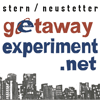
by Nathaniel Stern and Marcus Neustetter
with funds from The Greenwall Foundation
getawayexperiment.net proposes a dialogue between the virtual and physical processes of sign and site design and perception. Stern and Neustetter have transformed several information-based web pages into collaboratively constructed communication sites. They commissioned local sign-makers in Johannesburg, South Africa to "re-mix" five, live websites. For a limited time, participants from anywhere in the world can edit the"getaway" pages, by uploading their own replacement images.
Read a review >>
Net Art News >>
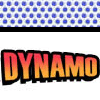
by Kate Armstrong and Michael Tippett
with funds from the Andy Warhol Foundation for the Visual Arts
Grafik Dynamo loads live images from blogs and news sources on the web into a live action comic strip. From the time of its launch in 2005 to the end of 2008, the work used a live feed from social networking site LiveJournal. The work is currently using a feed from Flickr. The images are accompanied by narrative fragments that are dynamically loaded into speech and thought bubbles and randomly displayed. The work takes an experimental approach to open ended narrative, positing a new hybrid between the flow of data animating the work and the formal parameter that comprises its structure.
Net Art News >>
Furtherfield review >>
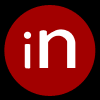
by Michael Mandiberg and Julia Steinmetz
with funds from the Jerome Foundation
IN Network was an extended cell phone life-art performance about distance, communication, intimacy, telepresence, and living together while apart. During the month of March, Mandiberg (New York) and Steinmetz (California) performed their relationship via a photo moblog and podcasts of their phone conversations. There were also several live audio webcasts of the artists sleeping together on their cellphones. All of their text and picture messages were routed through the site and are now archived there. [Optimized for Mozilla Browsers; Explorer 6+ and Netscape 7+ for Mac; RealPlayer required]
Read a review >>
Listen to an interview >> [RealPlayer]
Net Art News >>
Read an article >>

by Nick Montfort, Dan Shiovitz, and Emily Short
with funds from the Andy Warhol Foundation for the Visual Arts
Mystery House, the first graphical adventure game (1980), has been reverse engineered and reimplemented in a modern, cross-platform, free language for interactive fiction development. Visitors can either play modified versions of the game or create their own versions with the Mystery House Occupation Kit; artists and authors, with or without programming experience, can hack at and reshape Mystery House Taken Over, easily modifying the 'surface' aspects; or they may choose to undertake more substantial renovations.
Read a review >>
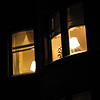
by Teri Rueb
with funds from the Jerome Foundation and the LEF Foundation
Itinerant is a site-specific sound installation in Boston, Massachusetts. It invites people to take a walk through Boston Common and surrounding neighborhoods to experience an interactive sound work that re-frames Mary Shelley's Frankenstein, the classic tale of conflict between techno-scientific hubris and the human spirit. Sounds, 'played' by visitors as they move through the city, create a series of frames within which to reflect upon our highly mobile, technologically saturated society and issues of identity, place, and displacement. Mobile and locational media (GPS) formally underscore themes in the work. The sonic overlay is also presented as an interactive map on the web, creating a formal re-framing and displacement of this site-specific work. [Needs Flash Player, Speakers/Headphones and broadband connection]
Read a review >>
Read a paper >>
Read a paper >>
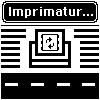
by Andy Deck
with funds from the Andy Warhol Foundation for the Visual Arts
Imprimatur is a free, easy-to-use tool for producing posters. Users contribute to a poster layout via their web browser. Creativity becomes a shared process, as unpredictable as the people who are passing through. The artist, rather than providing images, provides a system intended to activate the viewer's thought and expressiveness. Against the backdrop of a mass media culture that promotes conformity and passivity, Imprimatur encourages "viewers" to choose themes and produce their own messages. It propels on-line expression out of the ink jet and into the streets. [needs Java and Adobe Acrobat Reader]
Net Art News >>
by Ricardo Miranda Zuñiga
with funds from the Andy Warhol Foundation for the Visual Arts
Initiated by requesting personal commentary from individuals representing several generations of a single family, Fallout, Part I: An Open Repository is now open for submissions by anyone concerned with Nicaragua or other similarly imperiled nations. The site presents a written and graphical history for those not familiar with Nicaragua and utilizes collaborative software to investigate the enigma of the Nicaraguan national character. Fallout potentially serves as a case study of the lasting effects of globalization and U.S. interventionist policies upon developing nations.
Net Art News >>
Read a review >> [PDF, Spanish]
Read an interview >>
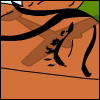
by Tal Halpern
with funds from The Greenwall Foundation
"Believe in me because you have heard a voice."
From a small room, he spoke to her and she listened. It was hours before liberation and the start of a new war. In his letters and illustrated recollections, he described an entire world to her, one she could only begin to imagine. But now that the war is over and he has disappeared, she is not alone in her interest in his world with all its prophetic vision. A new media narrative, which unfolds in the form of a man's literary remains, Le Nouveau Western is a story about the past, which is not yet passed; a mediation on memory and war in the information age. [Needs Flash MX player and Speakers/Headphones; optimized for Safari 2.0, Firefox, Explorer 5.2 for Mac + 6.0 for PC, Netscape 7.2 or higher]

by Kushal Dave
with funds from Murray G. and Beatrice H. Sherman Charitable Trust
Exegesis is an attempt to understand how people quote the Bible - which parts they choose to quote, and why. It highlights the portions that appear most often on the web and presents excerpts from some of the pages doing the quoting, visualizing their interpretations. The Bible is quoted in a range of contexts: political, academic, scientific, ethical, literary, and, of course, religious. Exegesis places a set of rules in motion. No editorial selection is applied. [Needs Java 1.4 +; see Technical Requirements]
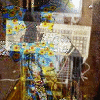
by Alexandre Freire, Etienne Delacroix, Giuliano Djahdjah, Luís "Asa" Fagundes: hacker, Murmur, Ricardo Ruiz, Romano, and Tatiana Wells
with funds from the Andy Warhol Foundation for the Visual Arts
mimoSa is a continuous workshop that moves around Brazilian cities collecting people's stories using recycled and reconstructed technologies. The aim of the workshops is to design a machine capable of altering the Brazilian mediascape. During the workshops a group of artists, programmers, and activists create and operate this machine. The machine records stories, stores them in a database, broadcasts them on FM, and records them to CD. It also prints telephone numbers and instructions on city streets and walls so that people passing by are able to access the stories via their mobile phones. mimoSa maps these activities via its web portal from which visitors can access both audio and video interviews. [Needs the VLC Media Player]
Net Art News >>
by Brian Kim Stefans
The Flash Polaroids occupy a middle ground between an experimental film/video aesthetic and interactive installation video works. The "Studies" were partly inspired by David Crawford's Stop Motion Studies. "Portraits" are a moving images that essentially sit still, or still images that move only slightly over time. The "Micro-narratives" introduce "stories" to the Flash Polaroids, and the "Interactive" set pushes outward toward the user. [Needs Flash plugin]

by Peter Horvath
Tenderly Yours resituates the personal, casual and ambiguous approach of French new wave cinema in a net art narrative that explores love, loss and memory. The story is recited by a striking and illustrious persona as she moves through the city with her lover. [Needs DSL/Cable; IE 5.0+ or Safari; Quicktime 6; and popups activated]
Net Art News >>
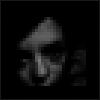
by Michael Takeo Magruder
The mobile phone has become the primary transmitter of our digital selves. Generating ephemeral networks, it mediates our intimate exchanges and erodes distinctions between public and private space. Within this framework, there exists the potential to explore, critique and expand the conceptual and aesthetic structures of classical portraiture. Can the physical recording limitations or compression artefacting of mobile phone technologies become meaningful creative elements? Does the portrait attain a greater or different 'truthfulness'? Select from Standard Computer, PDA or Smartphone versions. [Needs Flash Player and Speakers/Headphones]
Luziano Testi Paul's latest works explore the possibilities, myths and realities that float around in a global culture obsessed with communication. He questions the modernist imperative of building spaces for user-user interaction that inevitably end up being the same as user-machine interaction: we say what the interface let's us say, and our messages and intentions are reshaped by our interfaces. How do these ideas alter the way we perceive, react, relate, feel, and communicate? How do these ideas reshape our messages and intentions? Can we become completely blind in a world bound by optical fiber? [Needs Internet Explorer 5+, Macromedia Flash Player 7+, Adobe Acrobat 5+ and sound on]

kanarinka's recent collaborations include opening a nail salon at the Boston Center for the Arts, walking with her head in a bucket of Coke in Canada, staging a taste test with teenagers in a parking lot in Roxbury, podcasting interviews with residents of Boston's South End, launching an international, public database of Corporate Commands, and rolling around on the ground in a white lab coat. kanarinka's research interests include public space, performing cities, experimental urbanism, social cartography and infinitely small things. She is working on new definitions for "psychogeography" and "microperformance" (feedback is encouraged).
Net Art News >>
Net Art News >>
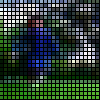
by Michael Takeo Magruder
Versions available for standard computer, PDA, and Smartphone
Re_collection is the product of one of the most ubiquitous technologies - the mobile phone. A captured moment, precious and instilled with personal significance, provides the exclusive source material for the artwork. The recorded sequence - stripped of resolution and apparent depth, has become depersonalised, reduced to a minimalist aesthetic that reveals archetypal forms and the inherent emotional connotations they evoke. Through this purposeful paring back of detail the divisions between personal and universal are questioned. It is a search to reveal the underlying 'truth' to these, our most intimate of recollections that exist between dream and remembrance. [Needs based on version you select]

by Abe Linkoln
From the Pop Up Manifesto: 1. First click, best click…7. Like a ballet
Read a review/page 1 >> [PDF, Spanish]
Read a review/page 2 >> [PDF, Spanish]
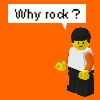
by Annie Abrahams and Clément Charmet
with texts by Alan Sondheim and Frédéric Madre
Why rock? presents sound works by net artists with real or supposed rock affinities. Why rock? Is it a need to make an adolescent dream come true or an urge to become more pop(ular)? Is it about making the body present on the screen or taking control of the power of the word? Is it an escape from net art production patterns or because we believe 21st century rock stars will emerge from the net? [Needs Speakers/Headphones]
Read a 1/review >> [Italian]
Read a 2/review >> [French]
Read a 3/review >> [English]

by Thomson & Craighead
On January 1, 2005 an automated beacon began broadcasting on the web. The beacon continuously relays selected live web searches as they are being made around the world, presenting them back in series and at regular intervals. The beacon has been instigated to act as a silent witness: a feedback loop providing a global snapshot of ourselves to ourselves in real-time.
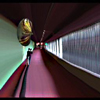
by LeMaitre & Rosenzveig
playListNetWork is a distributed video editing database that allows multiple users in different locations to edit and annotate media clips and playlists simultaneously. It's comprised of three parts: the software developed in consultation with the artists; the audio visual media content made with the software; and an interface to visualize and navigate the authored structure. [Needs Speakers/Headphones]
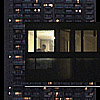
by Roch Forowicz
Invigilate confronts the problem of the lack of privacy in society and questions whether relationships between people are bilateral. It is a call to action. After the project was completed, Forowicz left flyers about Invigilate at each of the blocks of flats he'd videotaped, hoping to begin a dialogue with the residents about their surveillance. [Needs Flash Player and Speakers/Headphones]
by microRevolt
knitPro is a program that translates digital images into knit, needlepoint, x-stitch, and crochet patterns. microRevolt uses knitPro to make "logoknits" — knitted garments with the logos of sweatshop offenders. microRevolt is accepting submissions for the KnitPro Needlecraft Art Show, an exhibit of needlecraft used from knitPro patterns.
by Victor Liu
VTMZ performs derivative renditions of your songs online. Songs uploaded to VTMZ are interpreted and then performed for your listening pleasure and curiosity. Hearkening back to a long tradition of public, improptu performance, it is your community organ grinder, your salon piano player, piped to your ears. [Need we say it? Speakers/Headphones]
by Martha Carrer Cruz Gabriel
Voice Mosaic is a web-art application that converges speech and image, building a visual mosaic on the web with the chosen colors and recorded voices of people who interact with it from any place around the globe. The voice interface, developed with open-standards in speech synthesis and voice recognition technologies, works through phone calls from any telephone. [Needs Speakers/Headphones]
Read a review >>
Read an interview >>
by Michael Winkler
Signalglyph is an interdisciplinary web art project that challenges the mathematical foundations of modern science, and discusses the visualization of language. While the context is fictional, the alternative mathematical ideas are genuine and the measurements of the Great Pyramid and the meaning of the Egyptian hieroglyph, etc. are factual. The prevalent attitude in modern science is that it has nothing to learn from the field of artistic expression. But at the heart of every field of creative endeavor is the continual re-examination of accepted beliefs. Science must recognize that "proof" is not "truth" otherwise its revelations will be forever bound-up in a narrowly defined form of human thought, rather than revealing the true physical foundations of the Universe.
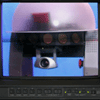
by Adrianne Wortzel and Studio Blue
Eliza Redux features a physical robot, which, having passed the Turing test with flying colors, thinks it is a human psychoanalyst and persists in offering online pseudo- psychoanalytic sessions. Please help us to bring this robot to its sensors. Peer consultation is available in the Reception Area as well as archived sessions and other reference materials. [Needs Speakers/Headphones]
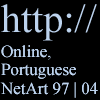
by Luís Silva
Online Portuguese Netart is the first retrospective show of Portuguese netart. It is the result of Silva's latest research project addressing the changes in the art world caused by the introduction of digital tools into the artistic process. Despite having such a retrospective status, the show is no more than Silva's subjective view of what have been the most interesting netart pieces created by Portuguese artists.
by Barbara Campbell
In 1001 nights cast, Campbell performs a short text-based work for 1001 consecutive nights. The performance is relayed as a live webcast to anyone, anywhere, at sunset. A frame story written by the artist introduces the project’s nightly performances. It is a survival story and it creates the context for subsequent stories generated daily through writer/performer collaborations made possible by the reach of the internet. [Needs Quicktime and Flash plugins; optimized for Mozilla Firefox 1.x, Safari, Internet Explorer 6+, Netscape 7.2+]
Net Art News >>
Read a review >> [Italian]
Upgrade! Boston is a monthly gathering of new media artists and curators that fosters dialogue and creates opportunities for collaboration within the media art community. At each meeting one or two artists/curators present work in progress and participate in a discussion. Upgrade! Boston is hosted by Art Interactive and is a node in the Upgrade! International network.

in Public Space
with funds from Emerson College and the LEF Foundation
This second speaker series took place at Emerson College during spring 2005. It explored ways that artists are using wireless technologies to transform our interactions with one another and our urban and natural environments. Individual presentations by Anne Galloway (keynote), Ricardo Miranda Zuñiga, Andy Deck, Naomi Spellman, Jeff Knowlton, Pete Gomes. A panel discussion with Julian Bleecker, Elizabeth Goodman, Greyworld, Teri Rueb and Anne Galloway (moderator) concluded the series.
with funds from the Department of Literary Arts, Brown University
and the LEF Foundation
Within the digital arts there are also letters: works by writers who explore the possibilities of texts controlled by computational processes, or who write in ways that take the network as a medium. Four writers read from their network-enabled work: John Cayley, Yael Kanarek, Nick Montfort, and Noah Wardrip-Fruin. Re:Writing was a collaboration between the Electronic Literature Organization and Turbulence.org.
